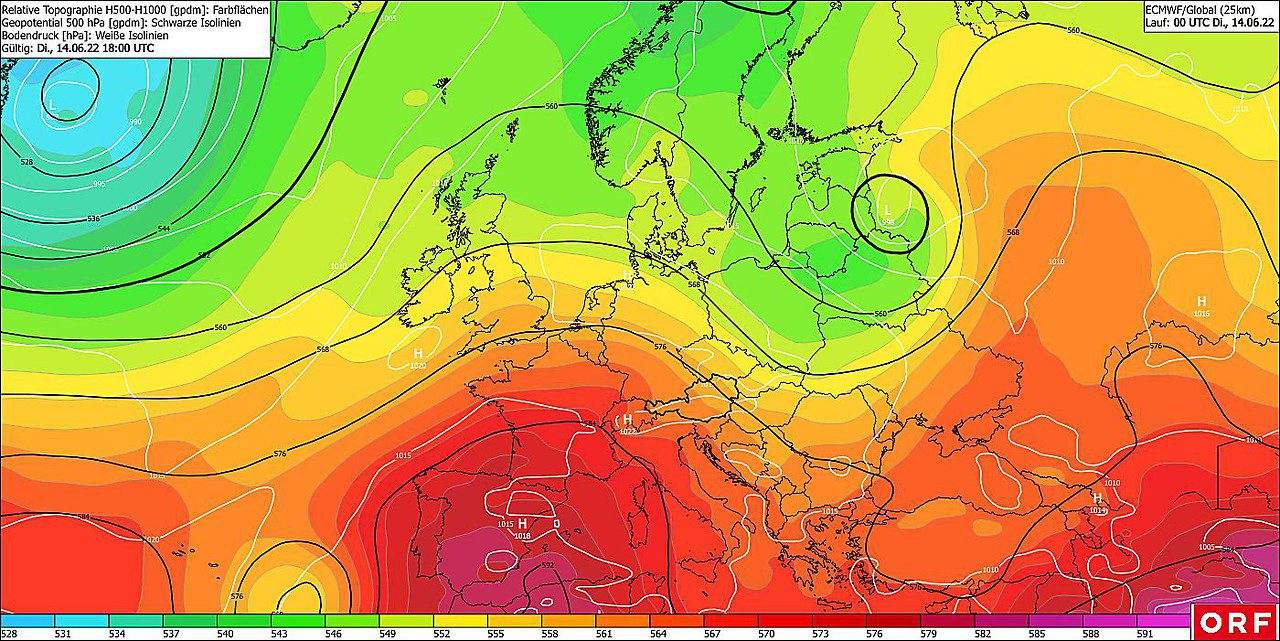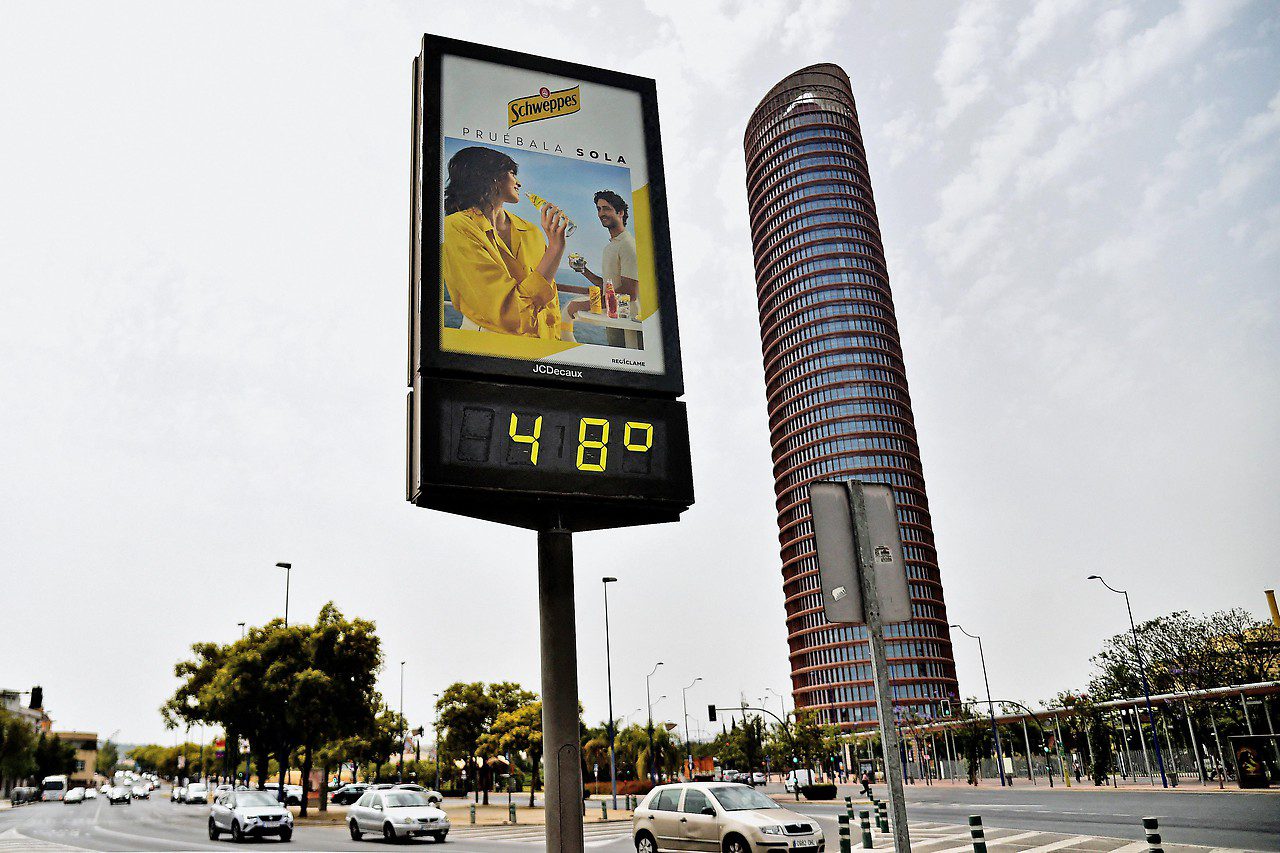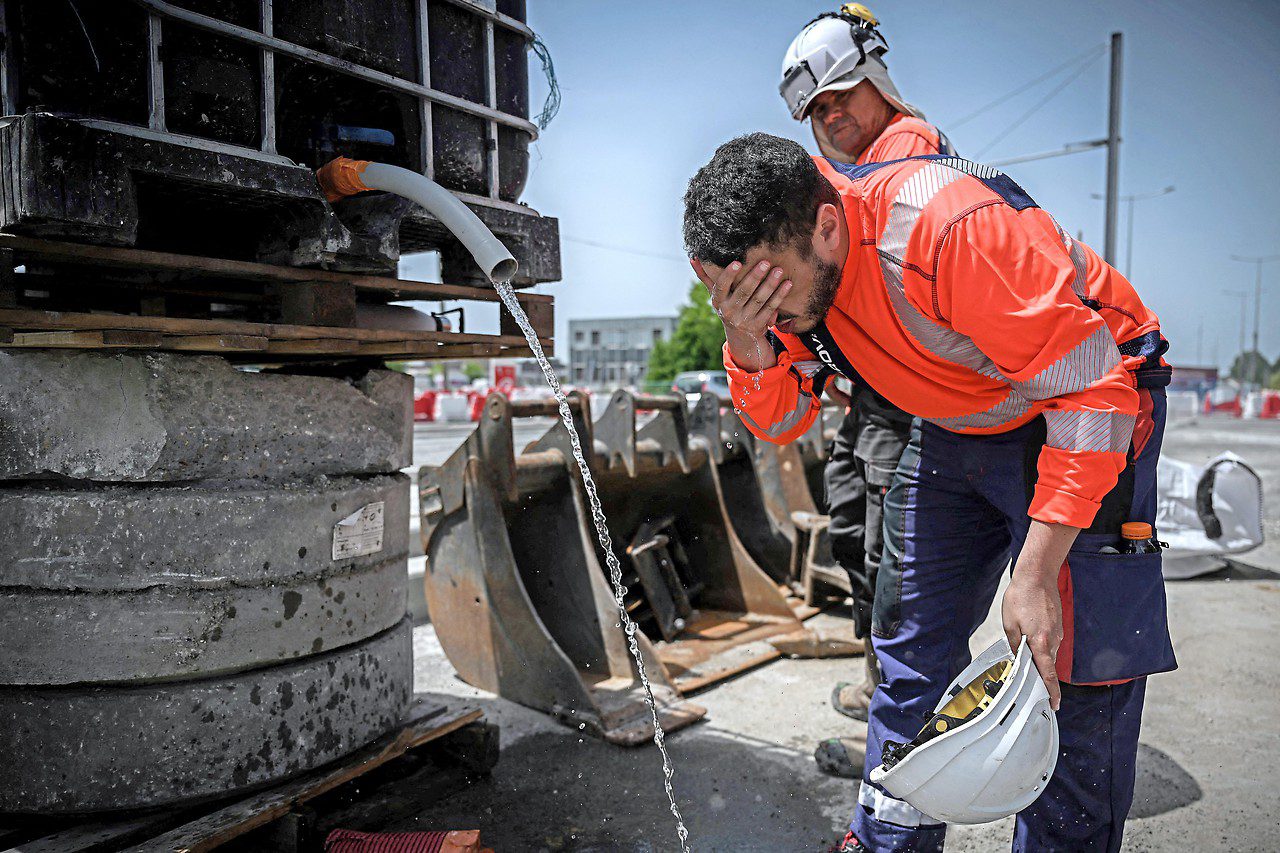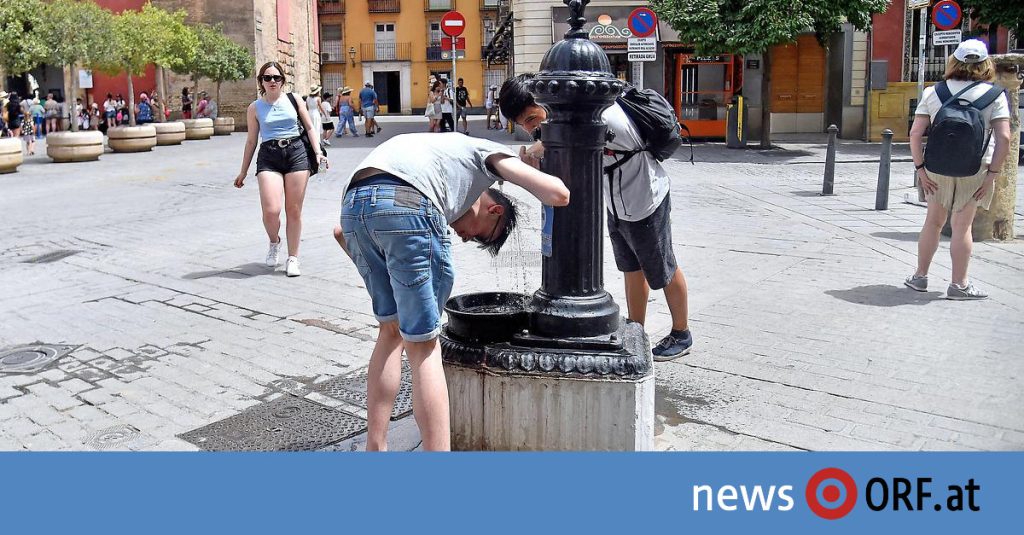Southwest Europe is experiencing firsthand what the climate crisis is feeling this week. Temperatures reach over 40 degrees and are therefore considered health hazardous values. Longer and more intense heat waves are a feature of steadily rising global temperatures. According to the IPCC State Report from 2021, there is no doubt that humans are the cause.
The once-in-50-year heat wave in climate before industrialization began occurs every ten years in today’s climate and is 1.2 degrees hotter. If the global temperature rises more by two degrees, then statistically there will be a heat wave every four years – and it will be about three degrees higher.
Spain as the furnace of Europe
A high wave has been building up in Spain for days, with hot air coming in from Africa. The air dries up due to the decrease in high altitude, the clouds are melting and the strong June sun does its part to warm the air on the Iberian Peninsula even further.
Spain is experiencing its worst mid-June heat wave in at least 20 years, Ruben del Campo, spokeswoman for the Spanish Weather Service (Aemet) told El Pais newspaper. Official heat warnings currently apply to 15 of 17 regions, including colder Catalonia.
It measured up to 43 degrees in the shade on Sunday and Monday, the highest temperatures this year in Europe. Even in heat-tested Spain, these values are not normal in the first half of June, but are about ten degrees above average. The heat will increase slightly in the coming days and almost close to the Spanish record in June, which is 45.2 degrees in Seville.
A call to “vigilance”
The heat wave in Spain and France has put the governments of the two countries on high alert. On Tuesday, Spanish Environment Minister Teresa Ribera said the situation was “extremely worrying”. In light of the heat wave that was also expected there, the French government called for “vigilance and solidarity” with the most vulnerable citizens.

Over 40 degrees in France too
In France, after the hottest May in measured history, a new heat wave has already begun in the south of the country. 36.2 degrees were measured in Marseille on Monday. It wasn’t hot at all here earlier in the year, the French weather service announced on Twitter. Also in Provence, 37.6 degrees were recorded in Coeur, the highest temperature of the year in France so far.
But this is just the beginning, because as of Thursday there is a risk of over 40 degrees, the peak should be reached on Saturday. This brings back memories of the “heat of the century” of June 2019, when a temperature of 46 degrees was measured. Not good news, because the country is already experiencing a severe drought.
The waters of many rivers in France, including the Rhone, go down. A problem for many nuclear power plants that require water for cooling. The French electric company, EDF, has announced that the production of the nuclear power plant in Saint Alban could be throttled again, as it was at the beginning of June.

Heat and drought also in Italy
Heat and drought are also a major problem in Italy. According to the weather portal Ilmeteo.it, the water level in the Po River, the country’s longest river and lifeline in the north, is lower than it was 70 years ago. In agriculture in particular, there is an increasing shortage of irrigation water.
Italian meteorologists are forecasting temperatures of 37 or 38 degrees in the next few days, and there is no sign of the drought abating. The situation was also aggravated by the long melting of small winter snows in the Alps.
Even in England, it will be temporarily hot, with London seeing one of its rare days with over 30 degrees on Friday. Already on Saturday, at the latest on Sunday, the air will be cooler in the British Isles and it can rain more heavily.
Records are also possible in Germany
At the end of the week, the heat from France will really hit Central Europe, some calculations put it at 38 or 39 degrees for Germany. In mid-June, it has never been this hot in Germany since records began.
The June record is 39.6 degrees and was recorded on June 30, 2019 in Berenberg an der Saale. However, there is still some uncertainty about how extreme temperatures will also reach Germany and Poland.

Hot weekend in Austria
According to the current situation, Austria was not spared from the heat wave either. In the next few days there will be a lot of sun, but at the moment it is only 30 degrees in some places. In Corpus Christi on Thursday, there is also some rain and thunderstorms, which can be very heavy in some places.
The right heat in this country comes on Saturday, hitting 33 or 34 degrees in western Austria. Sunday night can cost some people sleep if the temperature does not drop below 20 degrees, as there is a risk of a tropical night in some areas.
The heat will likely increase on Sunday, 35 degrees or even a little more in the range of possibilities. This means that the hottest day of the year so far is imminent. How long the heat will last next week can not be said with certainty. Fortunately, it shouldn’t last long.

“Food practitioner. Bacon guru. Infuriatingly humble zombie enthusiast. Total student.”








More Stories
Kyiv: Russian Kursk offensive halted
US Presidential Election: Former US Government Officials Warn Against Donald Trump's Election
Netherlands wants to leave asylum system